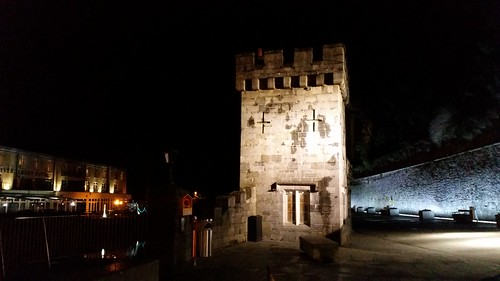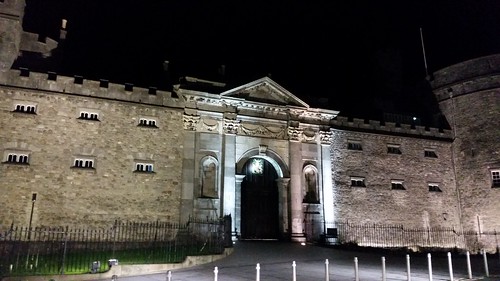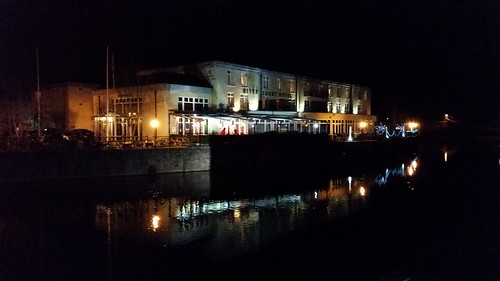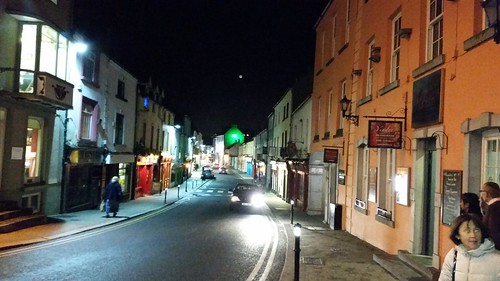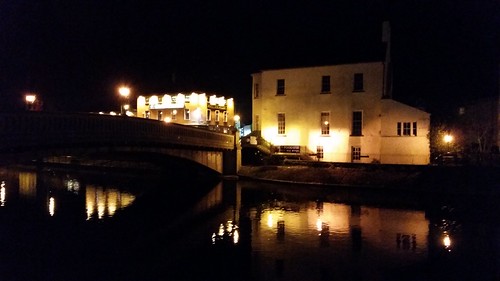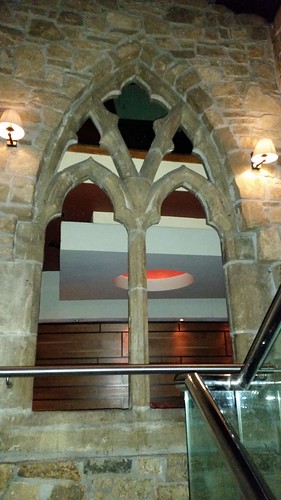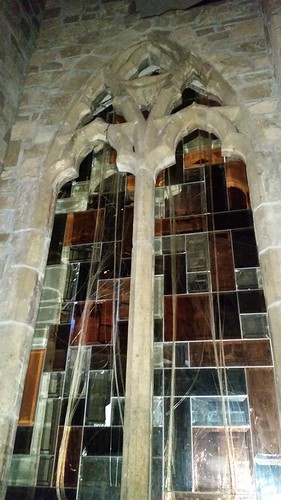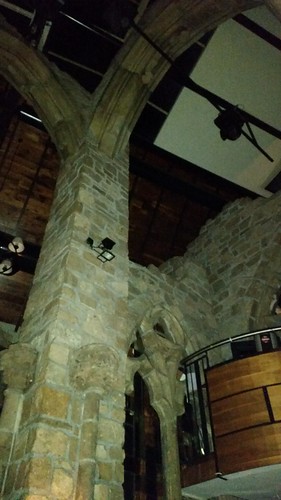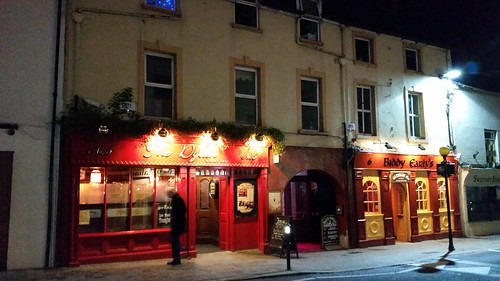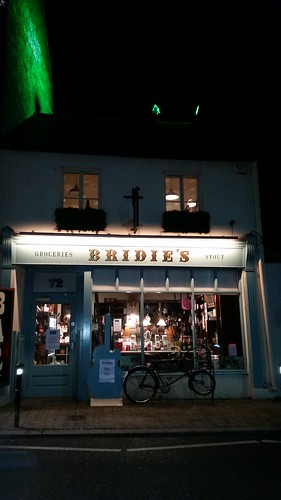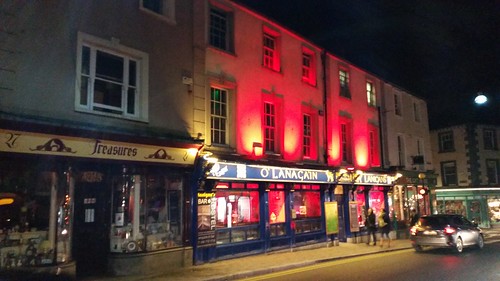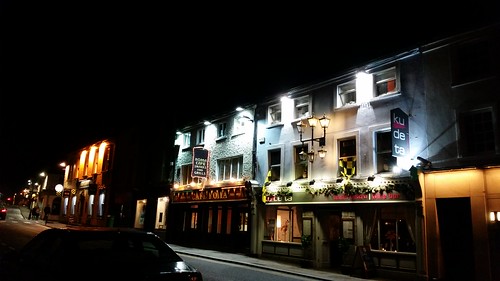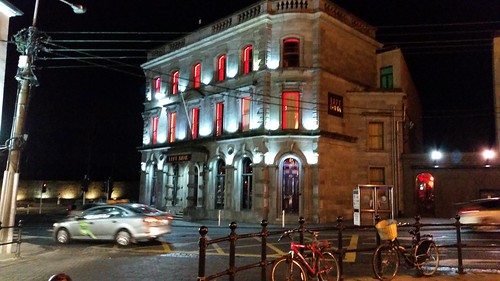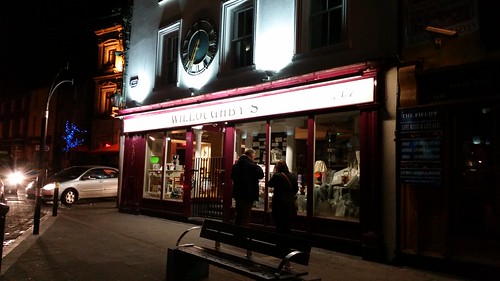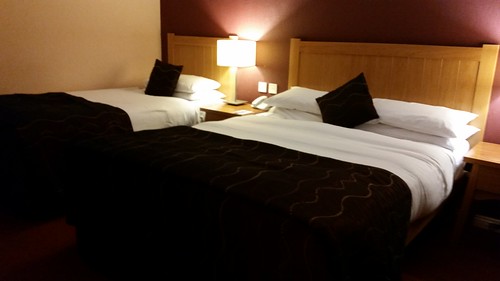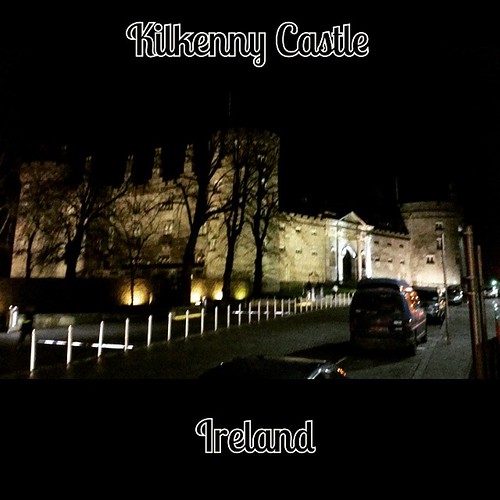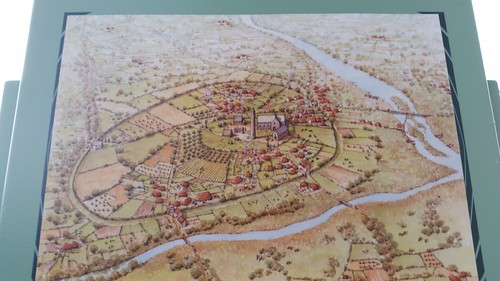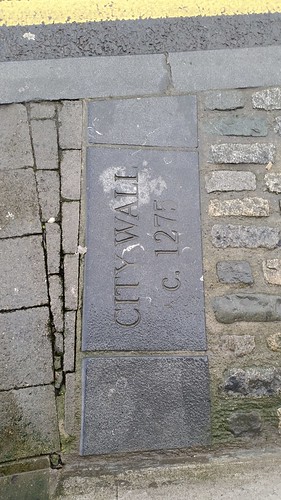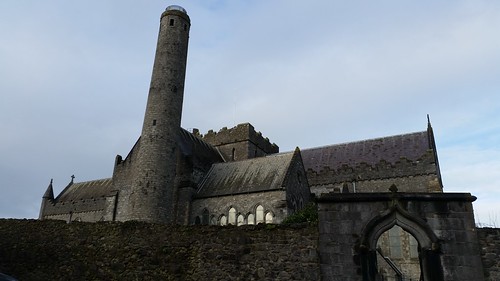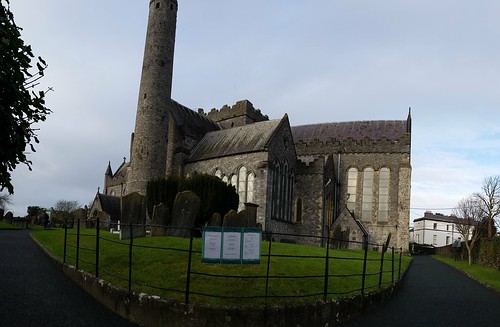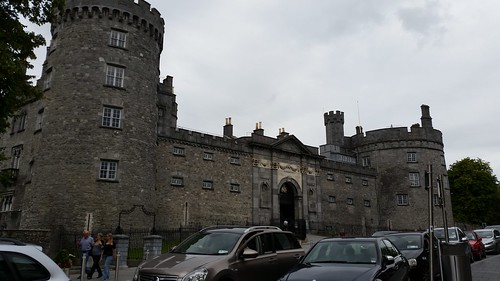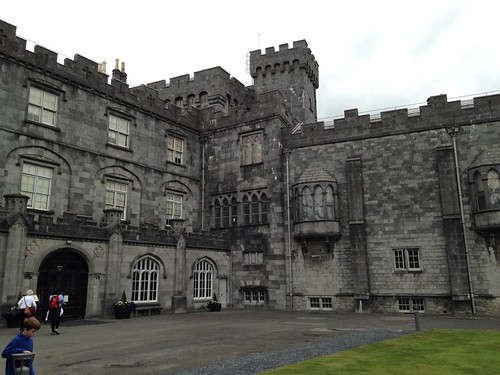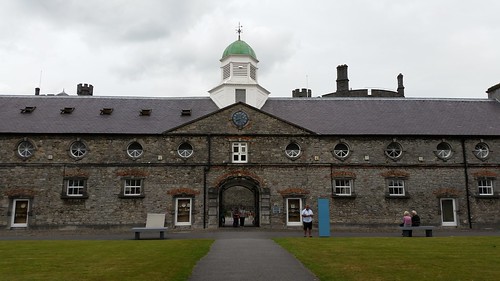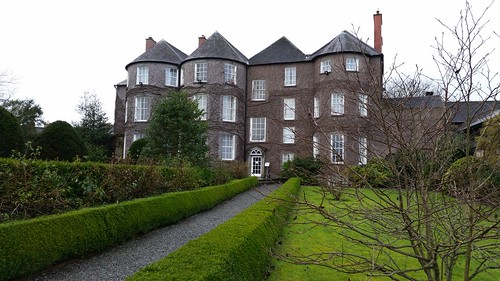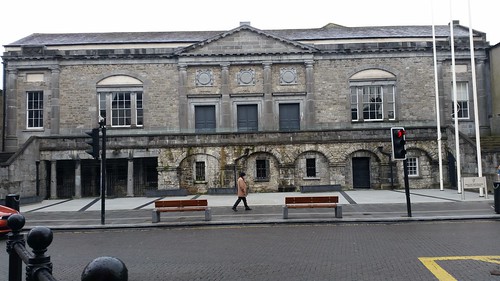When all else fails… walk away for a weekend, or a day, or even a few hours. Get out of your comfort zone, take a breath, and then you can come back renewed with a new vision and perspective on whatever it is overwhelming you in life and decide what to do. Sometimes we get too caught up being close to a problem, or stuck inside our heads. For our own mental health, we have to let go – just to be able to cope. And it’s okay.
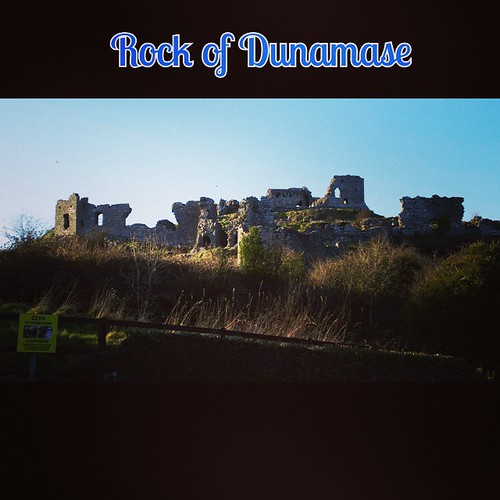
This is a hard lesson for many of us, and as someone who has had lots of challenges in my life I can easily see when my friends just need a break and time to walk away because they’re too close to a situation. Sometimes they can see it, sometimes they can’t, and sometimes as a friend, it means taking action for their own mental health as well as my own (because I worry and care about them). Back in January, a very good friend of mine was having some life challenges. So, because I adore her, I offered to meet up at a shop for lunch where I knew she’d be and give her a lift home. Only… little did she know, it would involve me “kidnapping” her for a spontaneous overnight trip, and just pointing the car in a direction and seeing what we saw. It would give her time out, and a little bit of a chance to breathe – and maybe help her feel better.
B and I met at the shop about noon, and loaded in the homewares purchases in the back of the car. On the way to her home, I said well, Lady, I’m sorry to do this, but in light of everything else – I’ve decided we’re going on a surprise trip. I’ve packed everything we need – toothpaste, toothbrushes, hairbrush, shampoo, etc. I have an extra t-shirt for the night and etc. The only thing I didn’t bring was a pair of undies for you – which we can get at a shop wherever we decide to stop (as well as anything else we forgot). I have a full tank of petrol, I have 150 euro, and well, my dear, pick a direction… because you’re in the car and not saying no. Here’s the map. Where haven’t you been?
I was initially met with a bit of concern, and a little bit of frustration at this “unplanned” trip, but in the end, God love her, B called the nail salon and cancelled her appointment, and decided to just go with it. So, we headed west… toward Portlaois and about an hour in saw an interesting brown “point of interest” sign for the Rock of Dunamase. I pulled off the highway at the exit, and after some driving about rolling hills, getting lost and then returning to where we originally exited, we ended up going down a narrow twisty road and parking in front of a pretty little brick church – across from which was a little hiking hill –
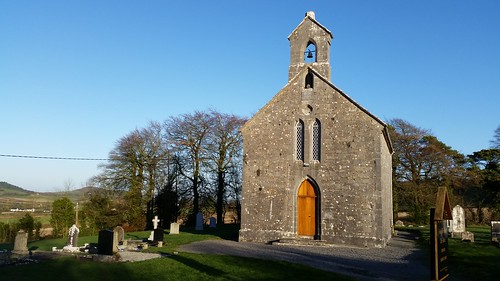
and the ruins of an old Castle, sitting at varying terrace levels high upon the hill.
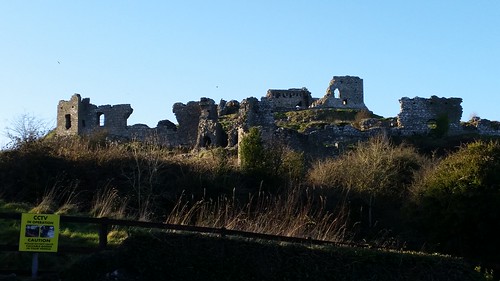
.
This then, was the ruins of Rock of Dunamase. It’s owned by the OPW (office of Public Works) here in Ireland, and it’s a free unmanned site which anyone can enter through a gate and go explore. As it was a sunny (but super cold) day in January there was no one about and we proceeded in. There we read the sign and learned that the castle was built in the 1100’s on top of an old 9th century fort (Dun in Irish) by the Anglo-Normans. Only it wasn’t just any “Normans”. It happens to be one of my personal “favorite” Normans – the famed Strongbow.
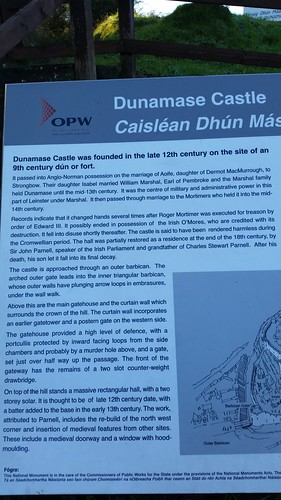
Way back in the 1100s (pre Norman Invasion), the main landowner in the region was an Anglo / Irish King called Dermot MacMurrough. He built a castle / fort on top of the hill locally known as Dunamase (Dun Masc aka Masc’s Fort) where there had been previous fortifications (those old fortifications had endured 2 different Viking raids before the hill fort became dormant for about 100 years). At the time, King Dermot controlled much of what is present day Dublin, up the coast to Newry, and down to Wexford and Wicklow- and then across to Longford, Kilkenny and PortLaois, the old kingdom called “Leinster”. However, King Dermot was kicked out of Ireland by a neighboring King O’Rourke and the Irish because he kidnapped the King O’Rourke’s wife and took her to the newly built castle.

Around 1170, King Dermot MacMurrough negotiated with the Norman knight Strongbow to marry his daughter, the princess Aoife in 1170, and granted the castle structure to Strongbow as part of Her dowry. In return, Strongbow agreed to assist King Dermot regain his lands… and thus begun the Norman invasion of Ireland. They were successful, and not long after, Princess Aoife and Strongbow (Strongbow’s buried in Christchurch Cathedral in Dublin where you can see his likeness there today)
lived at the castle, and had a daughter, Isabel. Isabel was married off to William Marshal (Earl of Pembroke) in the 1200’s, and he took over the castle (Strongbow moved to Dublin area) and had 5 sons and 5 daughters. From here, the Marshal / Pembroke Earls held the castle until the middle 1200’s, when the last of the males died with no children. It was the center of administrative power in the region.
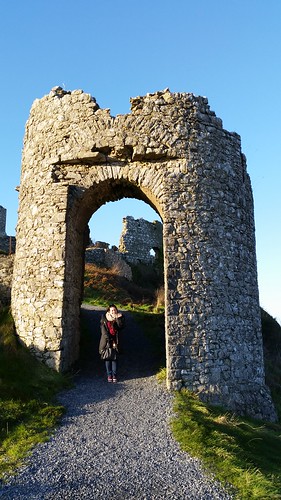
The barbican gate ruins

The Moat
By the mid 1200’s, when there were no male hiers to the Dunamase, it was passed to the first of William’s daugthers, and subsequently the granddaugther, Maud Marshal-Mortimer. By then, Maud was married to Roger Mortimer (a Welsh lord under the Henry III). They had a son, also named Roger (I call him Roger Jr from here out) – whom, after inheriting the castle bounced loyalties back and forth between the English and the Welsh in a bid for power.
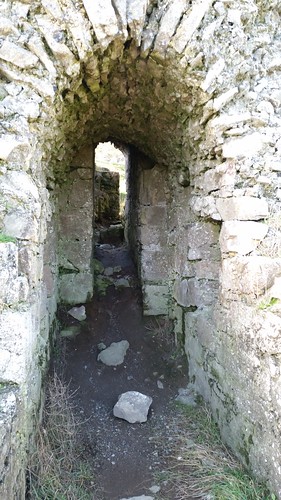
Narrow entry between buildings

The Main hall entry (2 stories)
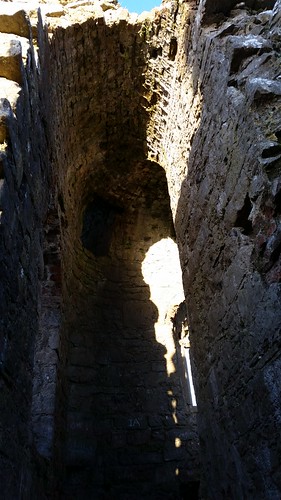
Looking up at the vaulted ceiling from part of original entry

main Hall & part of chapel
Roger Jr, interestingly – was appointed Lord Lieutenant of Ireland in 1316, and was imprisoned in the Tower of London in 1322 because he led the a revolt against King Edward II (the Despenser War). Roger Jr. later escaped and went to France, where he was joined by Edward’s queen consort Isabella, whom he took as his mistress. After he and Isabella led a successful invasion and rebellion, Edward was subsequently deposed; and Roger Jr. allegedly arranged the murder of Edward II at Berkeley Castle. Meanwhile, for three years, Roger Jr. was the de facto ruler of England before being himself overthrown by Edward’s eldest son, Edward III. Accused of assuming royal power and other crimes, Roger Jr. was executed for treason in 1330.

Right side – some knocked over curtain walls
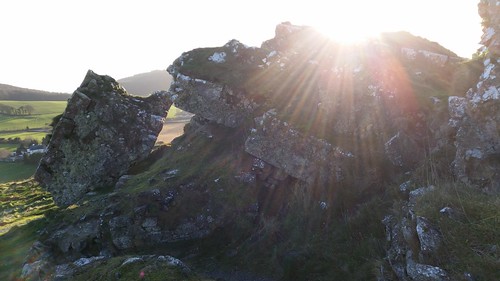
This must have been a hell of an explosion – this is parts of a wall blown up by Cromwell’s forces.
Sometime around 1350, the disgraced Mortimer family was out – and the castle at Dunamase had become a ruin of it’s former self. The only other bit of history of note was that in the 1670’s, Cromwell’s armies planted explosives around the castle ruins and blew them up to keep the revolting Irish from using them as defense fortifications. It must have taken some serious explosives (see the pictures below) because the walls were all 4-6 feet thick (or wider) and literally knocked wonky in places (above).

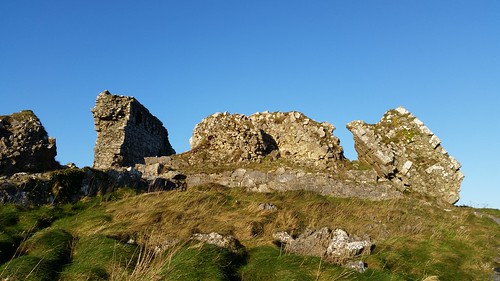


Panroama over the valley below
From the Rock of Dunamase, we headed through Abbyleix and on to Kilkenny for the night. More on our night in Kilkenny tomorrow.
if you want you can read more of the history at: http://www.laois.ie/leisureandculture/heritage/laoisheritagetrail/rockofdunamase/
